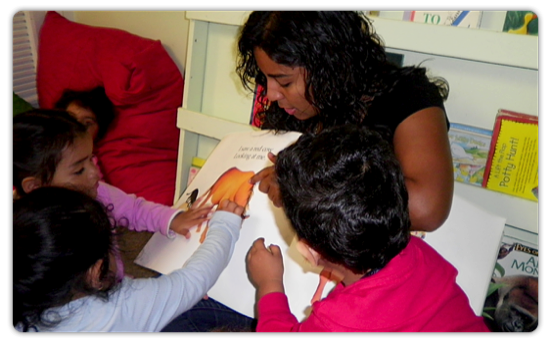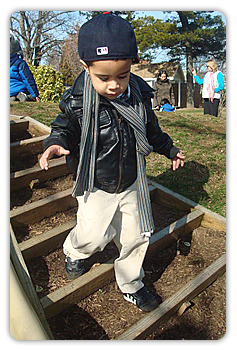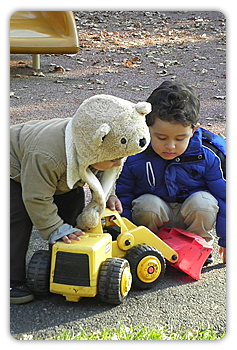@import((EC3))
Toddlers | 2 Year Old | 3 Year Old | Pre-K
The Two-Year-Old Class

Teachers recognize that:
Our classroom is divided into centers that support all area of development - physical, intellectual, social, and emotional development.
- Twos learn best through sensory activities and hands-on learning experiences.
- Twos communicate by using two and three word sentences. As they mature and practice, they begin to use more complicated language and more complex sentences to express their needs. They learn more complex language from the modeling of the adults in their world.
- Twos engage in parallel play.
- Twos are egocentric but are making the transition toward being aware of the needs and feelings of others.
- Twos struggle with waiting, sharing, and hearing “no”.
- Twos are working hard on emerging independence. While they want to do things on their own, they still look for the support of an adult.
Our classroom is divided into centers that support all area of development - physical, intellectual, social, and emotional development.
Sensory Area
We know that young children learn best through sensory activities. Activities like making and using play dough, pouring water in and out of containers, and cooking with teachers, allow the children to use their five senses to learn more about the world around them.Book Area
Reading and listening to stories are an important part of our day. Our book area provides multiple early literacy experiences. Books are provided that touch on real-life experiences - being in school for the first time, letting go of bottles and pacifiers and potty training. The classroom shelves have a rich supply of children’s classics. Teachers understand that reading to children promotes language development and a lifetime love of reading.Block Area
Children have opportunities to experiment with shapes, color, size, and balance while building in our block area. Two-year-olds typically work side by side, using legos, wooden blocks, cars and animals. There are multiples of favorite toys in the classroom as two-year-old are just beginning to sharing.Dress up Area
Family Center area allows children to develop their imaginations and begin to use symbols during pretend play. They practice real-life experiences - caring for babies and cooking dinner just like at home. Family Center provides social opportunities for children to play together as they become more aware of their peers.Outside Time
Children have opportunities to explore in our Nature Explore Classroom for at least an hour in the morning and an hour in the afternoon. Outside time is viewed as an important learning time. Many activities are brought outdoors when the weather permits. Children paint, read stories and build with blocks in the playgarden. Children work on their physical development as they run across the grassy field, jump for the log stumps, climb on the garden wall and ride their tricycles on the path around the gazebo. They study nature as they look at the butterflies on the butterfly bushes, water their garden and collect blossoms from the magnolia tree.



